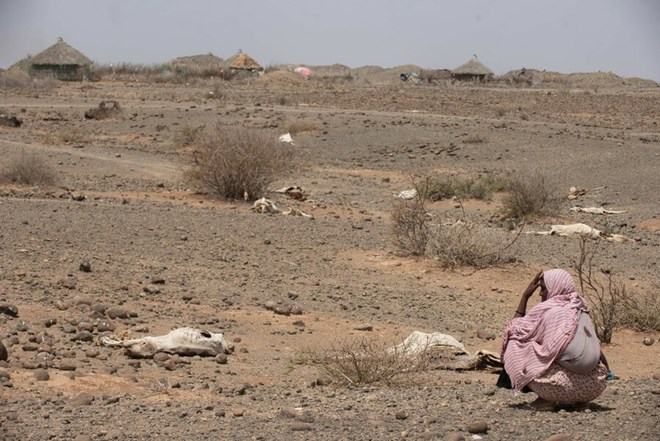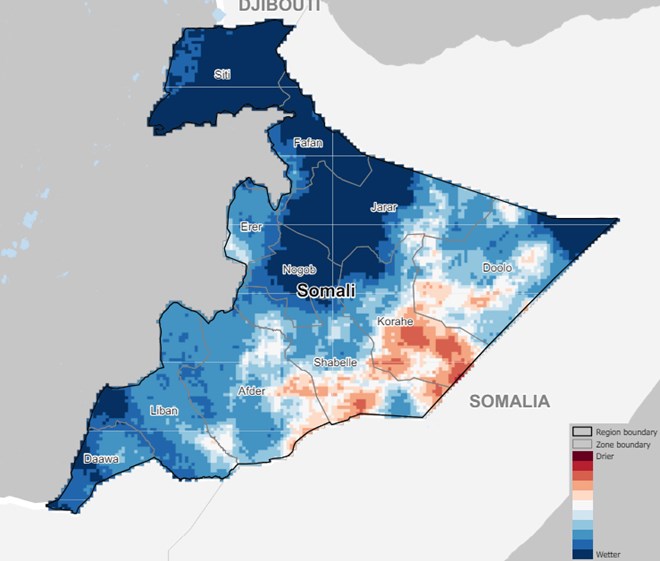
Tuesday April 16, 2024
Carcasses are a daily reminder of the devastation wrought by the 2021-22 drought. Photo: WFP/Michael Tewelde
The Somali region is divided into diverse livelihood zones, including pastoral areas such as Afder and Fik and agropastoral and sedentary farming zones like Jijiga. These areas have been hard hit by environmental disasters, which have profoundly affected the local economies that rely heavily on livestock and agriculture.
advertisements
According to a comprehensive assessment by REACH conducted during the 2023 Deyr rain season, the impact of these compounded crises has been severe. Over the past four years, the region has experienced historically high levels of acute food insecurity. Most pastoralists have seen their herds decimated by the lack of water and pasture, with consequent reductions in household income reaching up to 35% for pastoralists and 25% for crop farmers.Displacement exacerbates the region's woes, with more than 1 million internally displaced persons struggling with poor food security and limited access to income sources and basic services. Over two-thirds of these households cannot meet even half of their essential needs and have resorted to emergency-level coping strategies in an environment where sanitation and healthcare services are severely lacking, heightening the risk of disease outbreaks, including cholera.
The late 2023 Deyr floods further worsened the situation, impacting food stocks, agricultural land, livestock, shelters, and primary water sources. The assessment noted a dramatic decrease in livestock ownership, from 43% of households in 2020 to 18% in 2023. Crop production has also declined, increasing the region's food insecurity and economic instability.
In response to these relentless challenges, communities have adopted drastic coping strategies. Many have been forced to sell more livestock than usual, consume their seed stocks, or even resort to begging. These measures are short-term and unsustainable, underscoring the urgent need for enhanced humanitarian assistance that goes beyond immediate relief to foster long-term resilience.
Health and water sanitation are among the most pressing concerns. A significant portion of the population relies on unsafe water sources, and the region's healthcare infrastructure is ill-equipped to manage the increasing frequency and severity of disease outbreaks, further stressed by recent flooding damage.
Only 24% of households reported receiving any humanitarian aid in the past year, with many expressing dissatisfaction with the adequacy and quality of the assistance received. The critical needs identified through REACH's assessment emphasize the necessity for concerted efforts to enhance food security, restore and improve livelihoods, ensure access to clean water, and bolster health and nutritional services.

Standardised Precipitation Index (SPI-3) corresponding to Gu rains (March - May 2023)